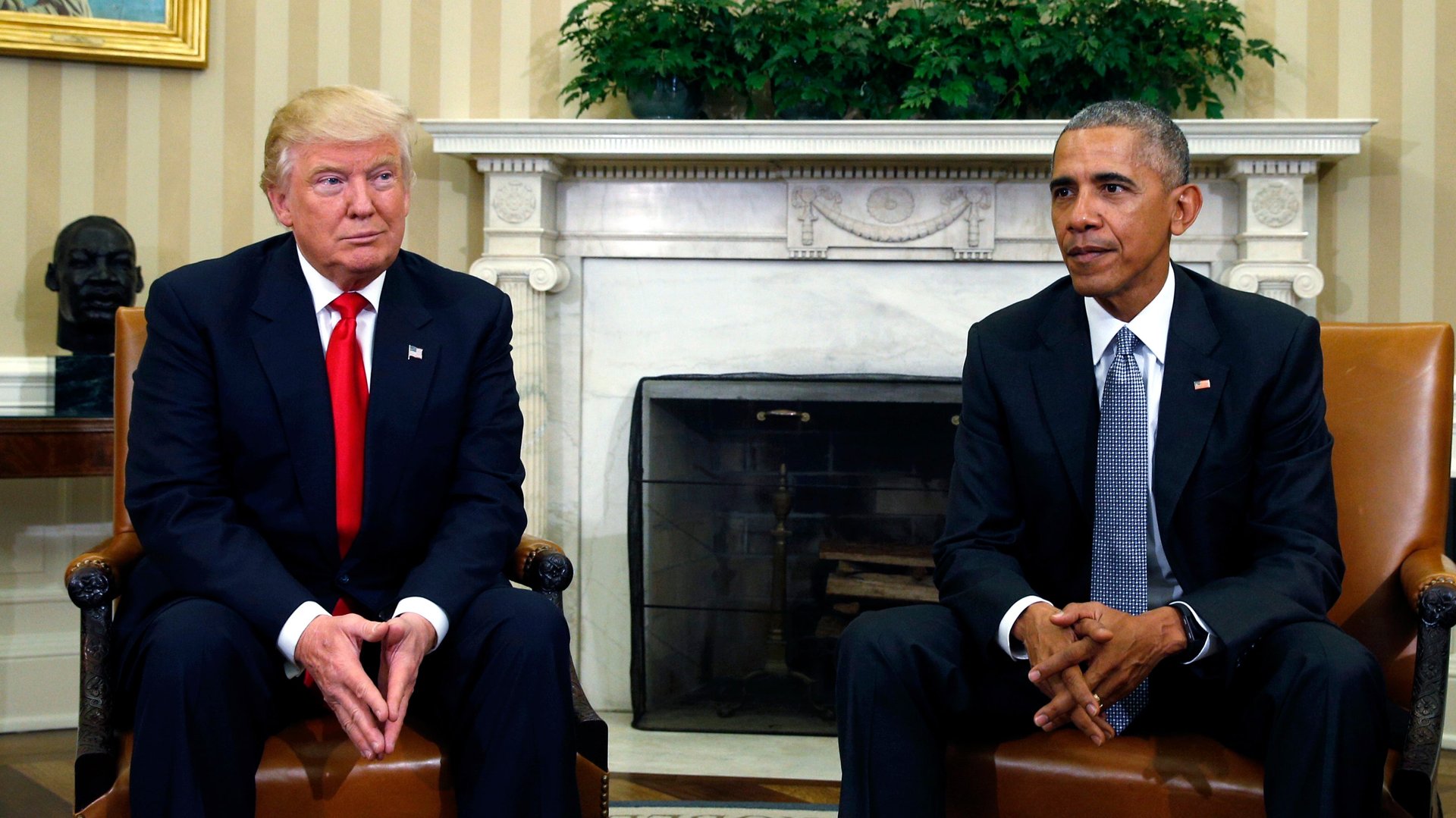Why the 2020 US presidential transition is so dangerous
Remember those awkward photo ops from the 2016 presidential transition, when president Barack Obama attempted to prep his successor Donald Trump? Don’t count on a new version of those democracy-affirming grip-and-grins in 2020 between Trump and president-elect Joe Biden.


Remember those awkward photo ops from the 2016 presidential transition, when president Barack Obama attempted to prep his successor Donald Trump? Don’t count on a new version of those democracy-affirming grip-and-grins in 2020 between Trump and president-elect Joe Biden.
Few will miss the photo opportunity, but there are real implications: The Trump administration is delaying nuts-and-bolts practicalities that ensure the business of the US government continues uninterrupted.
Nuclear weapons, natural disasters, and international negotiations—not to mention a pandemic and resulting economic recession—all require a seamless transition. America has solutions for this challenge. By law, winning presidential candidates are provided with office space and funds that help staff up a new administration, as well as briefings and reports on current activities to make sure new officials hit the ground running. This is obviously most critical when it comes to classified national security issues.
Non-partisan experts have been fretting about the Trump team’s lack of interest in transition planning, but there’s a bigger obstacle: The law requires the General Services Administration to ID the “apparent successful candidates,” and it has yet to do so.
“Now that the election has been independently called for Joe Biden, we look forward to the GSA Administrator quickly ascertaining Joe Biden and Kamala Harris as the president-elect and vice president-elect,” the Biden-Harris transition team told Quartz in a statement. “America’s national security and economic interests depend on the federal government signaling clearly and swiftly that the United States government will respect the will of the American people and engage in a smooth and peaceful transfer of power.”
The delay appears to have everything to do with Trump’s refusal to concede that he has lost the election. The last time there was a significant delay in the transition was in 2000, when the GSA waited until vice president Al Gore conceded on Dec. 13. There appears to be an informal precedent (pdf) that bureaucrats wait for the loser’s concession in the event of a close election.
Except this election just isn’t that close. The 2000 election ultimately hinged on Florida, which president George W. Bush won with just 536 votes. By contrast, Biden currently leads by tens of thousands of votes even in the closest states still counting, and can win even if he loses tightly contested Arizona and Georgia. In 2000, the ballots and voting mechanism in Florida created real questions of interpretation that led to litigation, but thus far we haven’t seen similar problems in voting identified anywhere in 2020.
Reality, however, may not convince Trump to concede. Trump and Republican leaders like Mitch McConnell and Kevin McCarthy being sore losers can’t prevent Biden from taking office, but it could sabotage a successful transition—unless GSA head Emily Murphy shows some courage in interpreting her role.
Former president George W. Bush has set a good example by congratulating Biden. It would be wise to follow his example in the transition, too. Miffed by their own experience with Bill Clinton, the Bush team provided a model transition to Barack Obama in 2008, which was doubly important as the country faced a serious financial crisis and recession.
Notably, Bush agreed to ask Congress to release more money for an ongoing economic rescue at Obama’s request, weeks before the new president’s inauguration. The move helped speed the rescue and gave markets more certainty about the path of future policy. It would be as if Trump asked Congress to push through much-needed pandemic rescue legislation at Biden’s request—something that could save lives and livelihoods, but also seems inconceivable.